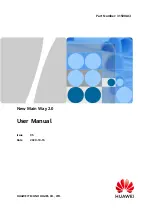
Controlling Device Functions
233
7SS52 V4 Manual
C53000-G1176-C182-3
6.3.3
Saving and Deleting Annunciations
Events are stored in the event buffers inside the SIPROTEC device. The same applies
for the fault records corresponding to the fault events. Spontaneous indications, to the
contrary, are transmitted directly to the computer without buffering in the SIPROTEC
device.
Normally, you do not have to erase the event buffer of the device during operation as
new events will automatically overwrite the oldest annunciations when there is not
enough memory space available. Erasing the buffers may, however, be sensible so
that they contain only information of new fault events e.g., following a plant inspection.
The buffers are reset separately for the different annunciation groups.
6.3.3.1
Saving Annunciations
from the PC
with DIGSI
To save annunciations of the
central unit
(PC linked to central unit) proceed as fol-
lows:
Click the desired annunciation group (see Chapter 6.2.1.1, page 214). The corre-
sponding buffer contents of the annunciation group appears in the right window.
Fault annunciations are displayed with the number of the network fault and with
date and time.
Double-click the desired entry. The list view of the annunciations is displayed.
Right-click in the list view to open the context menu and click
Save
. The annuncia-
tions are saved. Proceed analogously to save further entries.
You can also save entire annunciation groups. For this purpose, select the desired
annunciation group and click
File
→
Save
on the DIGSI menu bar. Next you see a
security prompt demanding whether to save all process data (annunciations and
operational measured values). Confirm with
Yes
. DIGSI automatically creates a
folder
−
provided it does not already exist
−
and saves the desired annunciation
group together with the process data to this folder. For more information see also
section 9.4 on device operation in the DIGSI Manual.
To save events of a single
bay unit
(PC linked to central unit or bay unit) proceed as
follows:
Open the corresponding bay unit in DIGSI Manager.
Click the desired annunciation group. The corresponding buffer contents of the an-
nunciation group appears on another window. Fault annunciations are displayed
with the number of the network fault and with date and time.
Double-click the desired entry. The list view of the annunciations is displayed.
Note
When deleting fault events also the fault event buffers are cleared and all correspond-
ing counters are reset to zero. If, however, you delete fault records (see subsection
7.1.4), the fault annunciations remain unaffected.
www
. ElectricalPartManuals
. com
















































